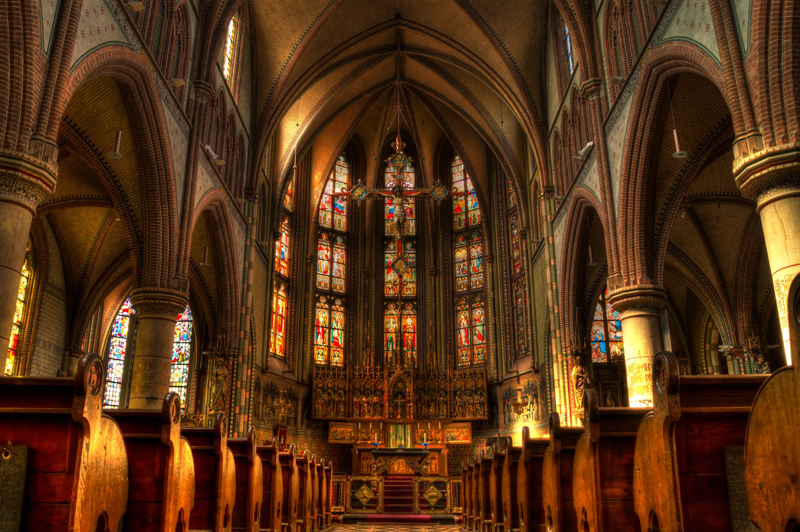Church History: Dark Ages – Part 1

In this Church history series we´ll first examine the fifth and sixth centuries.
During this time period we had twenty-six popes.
| | 399-401 -- St. Anastasius I 401-417 -- St. Innocent I 417-418 -- St. Zosimus 418-422 -- St. Boniface I 422-432 -- St. Celestine I 432-440 -- St. Sixtus III 440-461 -- St. Leo I (the Great) 461-468 -- St. Hilarius 468-483 -- St. Simplicius 483-492 -- St. Felix III (II) 492-496 -- St. Gelasius I 496-498 -- Anastasius II 498-514 -- St. Symmachus | 514-523 -- St. Hormisdas 523-526 -- St. John I 526-530 -- St. Felix IV (III) 530-532 -- Boniface II 532-535 -- John II 535-536 -- St. Agapetus I 536-537 -- St. Silverius 537-555 -- Vigilius 556-561 -- Pelagius I 561-574 -- John III 575-579 -- Benedict I 579-590 -- Pelagius II 590-604 -- St. Gregory I (the Great) |
The year 410 marks the downfall of Rome to the barbarian Goths who looted and burned it. Many Pagans blamed Christianity for this fall of Rome, stating that the God of Christianity did not protect the empire like their pagan gods did. Christians even wondered why God would let such a disaster happen. This was the premise for St. Augustine´s greatest work - The City of God. He wrote this book over a period of about twelve years.
With this fall of Rome also came a growing importance in the role of the pope. Leo the Great (Leo I) stands out in bringing the papacy into a leadership force of the Western world. The pope was expected to wear many hats, including not only spiritual leader, but also statesman, administrator and scholar. During Leo I´s papacy is the first time the title Pontifex Maximus (Supreme Pontiff) was used. In Latin this is translated to "highest bridge maker" and Roman emperors had previously used this title to signify their role as high priests in the Roman religion. Also during his papacy, after traveling two hundred miles north of Rome, Leo the Great negotiated face-to-face, unarmed, with Attila the Hun. Though there´s no record of the conversation between these two, the Huns turned back and did not attack Rome.
In 451 the Council of Chalcedon met and ruled that Jesus has two natures - human and divine. This was in response to a couple heresies (more on heresies later) of the time, one being Arianism. Arians claimed that Jesus was not divine. Another group from the East believed Jesus had a divine nature but not a real human one. Some bishops of Ethiopia and Syria disagreed with the Council´s decision and left the main Christian body. The results of this division are still visible today in the Jacobite and Coptic churches.
432 marks the year St. Patrick was made bishop and was sent to Ireland to preach the Good News to the Celts. Near the end of Patrick´s life, a woman named Brigid was born in Ireland in 453. Later she founded Kildare, a double monastery - one for women and one for men. Kildare was self-sufficient; it was its own little city. Kildare and other monasteries were the main centers for the spread of Christianity in Ireland.
Clovis, king of the Franks, converted to Christianity in 496 after marrying a Catholic princess and, according to legend, during a battle that he was losing he prayed to his wife´s God, resulting in a victory. Many of his soldiers converted as well and gradually all Franks embraced Christianity.
Read Church History: Dark Ages - Part 2.
Peace in Christ,
Melissa Knoblett-Aman

You Should Also Read:
BellaCatholic Site Map
GetFed Catholic Discount Catalog
Church History Links

Editor's Picks Articles
Top Ten Articles
Previous Features
Site Map
Content copyright © 2023 by Melissa Knoblett-Aman. All rights reserved.
This content was written by Melissa Knoblett-Aman. If you wish to use this content in any manner, you need written permission. Contact Melissa Knoblett-Aman for details.


